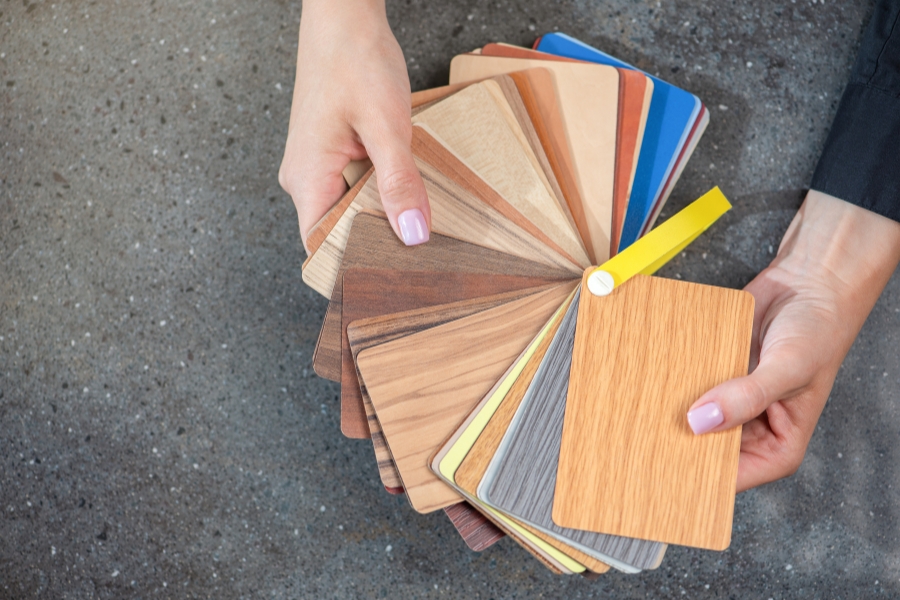When choosing finishing materials for furniture or interiors, you definitely want something that looks elegant and is durable. Well, two materials that are often chosen are Fancy and HPL (High Pressure Laminate). Both have their own unique characteristics and advantages, from appearance and texture to resistance to scratches and moisture.
But, between these two finishing materials, which one is actually more suitable for your needs? Let’s delve deeper into the comparison between Fancy and HPL so you can make the most appropriate choice to create a stylish and durable interior design!
Comparison of Fancy vs. HPL
Before making a decision, it’s important to understand the differences between Fancy and HPL. Both are commonly used as finishing materials, but they have distinct characteristics and advantages. Here’s a comparison of Fancy vs. HPL from various aspects that can help you make an informed decision.
1. Material Composition
Fancy uses a thin layer of real wood (veneer) that is attached to multiplex or MDF. After that, the surface is coated with a protective paint such as melamine or varnish so that the wood grain remains natural and clear. Meanwhile, HPL is made from several layers, such as kraft paper, decor paper, and a transparent overlay, which are then processed under high pressure to produce a strong and dense surface.
2. Surface Appearance
In terms of appearance, fancy highlights the beauty of natural wood grain with its texture and natural luster. Since it is made from real wood, each sheet is unique and no two are exactly alike. On the other hand, HPL features digitally printed patterns. Although the patterns vary, ranging from wood grain, marble, to concrete, the appearance tends to be uniform and feels artificial due to the repeating patterns on each sheet.
3. Patterns and Colors
The selection of patterns and colors for fancy is typically limited to the types of wood available in nature, such as oak, mahogany, or walnut. On the other hand, HPL has an advantage in terms of variety, available in thousands of patterns and colors, ranging from solid colors, woodgrain patterns, geometric designs, to metallic effects.
4. Moisture Resistance
Fancy has a weakness against moisture. If the protective layer is damaged, the veneer can absorb water, causing swelling or color changes. In contrast, HPL has a non-porous surface that is water-resistant. As long as the installation is neat and the joints are properly sealed, liquids do not easily seep in, making it easier to clean and preventing mold growth.
5. Installation Process
Installing fancy requires specialized skills because the process is multi-step, starting with manually gluing the veneer, sanding, and finishing with varnish or melamine. This process takes longer. Meanwhile, HPL is much more practical; with special adhesive and a press machine, this material can be installed quickly and the final result is neat.
6. Price and Maintenance Costs
In terms of price, fancy is generally more expensive per square meter. To maintain its appearance, protective coatings like varnish need to be regularly updated. HPL, on the other hand, is more economical and practical. Maintenance only requires wiping with a damp cloth, and if damaged, the sheets can be easily replaced.
Well, that’s a comprehensive review of the comparison between fancy and HPL finishing materials. Both have their own advantages: fancy is suitable for those who want a luxurious and natural look from real wood, while HPL excels in terms of practicality, design variety, and moisture resistance.
Ultimately, it all comes down to your needs and desired interior style. If you prioritize natural aesthetics and exclusivity, fancy veneer could be the right choice. However, if you prefer something practical, durable, and budget-friendly, HPL is definitely worth considering.
To be more confident in your decision, you can check out high-quality fancy and HPL products directly. Visit Hojaya and discover a variety of options that suit your project!

